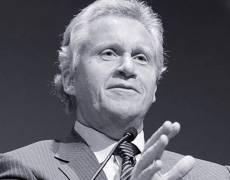GE's Energy Financing Profits Could Double by 2020
General Electric Co expects annual profit from energy investments to double to nearly $800 million by 2020, highlighting the conglomerate's desire to remain a financing powerhouse for industry even as it slims its credit card portfolio.
Chief Executive Officer Jeff Immelt has made energy sector growth a key part of his plan to return the company to its manufacturing roots, adding oilfield pumps, wind turbines and similar products to the portfolio in recent years.
Financing customers' purchases of those products, as well as investing in oil royalties, pipelines, wind farms and other energy projects, will compliment GE's industrial growth after the company spins off its North American consumer credit card business next year, executives said.
"This is a business that the GE board wants to grow," David Nason, head of the GE Energy Financial Services unit, said in an interview on Thursday. "It's not tied into the overall shrinking story of GE Capital. This is a core GE business."
The unit, which reported profit of $410 million last year, has a goal of posting double-digit-profit growth each year, in line with goals Immelt has laid down for the industrial part of the company's portfolio, Nason said.
"I'd love to tell you it'd be faster," he said. "I don't think anyone at GE would put the brakes on our growth."
The unit not only finances equipment purchases for customers, but directly invests in energy projects, regardless of whether they use GE products, though Nason acknowledged he would prefer to finance purchases from GE.
In 2012, for instance, the unit teamed up with JPMorgan to invest $225 million in a NextEra Energy Texas wind farm that used both GE and Siemens (SIEMENS.NS) turbines.
"I have a dual mandate: to generate returns and also to support GE," Nason said. "Where they both fit, that's perfect. And where they don't fit, I still want to generate above-average returns."
About $10 billion has been invested in the past decade in renewable energy projects, and late Wednesday GE Energy Financial Services said it plans to invest $5 billion more on solar, wind and other renewable projects through 2020.
Too big to Fail?
Even as GE Capital shrinks, investors say they are comfortable with the rise of GE Energy Financial Services.
"Financing on the industrial side is still a going concern at GE," said Tim Ghriskey, of Solaris Asset Management, which manages GE shares. "And GE Capital remains a strong organization. When they became too exposed on the consumer side is when problems surfaced."
Nason, who worked in the George W. Bush administration and helped design the Troubled Asset Relief Program that capitalized American banks in 2008, took the top job at the unit last fall.
GE Capital, the parent entity of GE Energy Financial Services, was named a systemically risky financial institution last year by the U.S. Financial Stability Oversight Council.
The designation, commonly known as "Too Big To Fail," in effect guaranteed more regulatory oversight of GE Capital, though Nason said he did not expect that to limit the company's growth in energy investments.
"I think I'm uniquely qualified because I lived through the building of the (regulatory) architecture, and now can help a complex company navigate through that," he said.
(Reporting by Ernest Scheyder; Additional reporting by Lewis Krauskopf; Editing by Terry Wade and Tom Brown)









